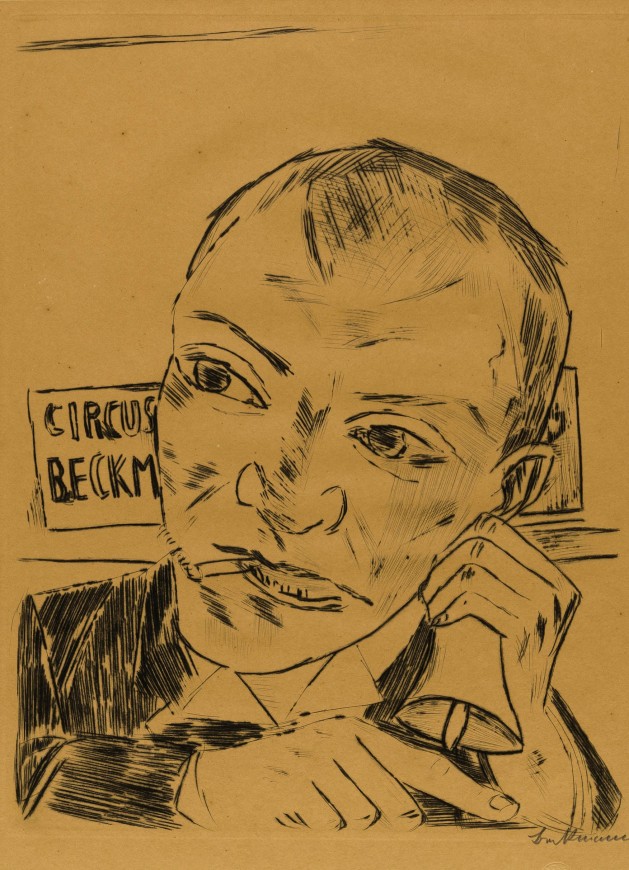-
Œuvres d'art
Max BeckmannThe Barker (Self Portrait), 19211884-1950Dry point etching
13 3/8 x 10 inThis painting is available to view at our Montreal gallery.
34 x 25.5 cmSoldInscriptions
signed, ‘beckmann’ (lower right)Provenance
Private collection, Town of Mount Royal, Quebec
Expositions
New York, The Metropolitan Museum of Art, Max Beckmann Prints, 14 July 2000 - 7 January 2001.Documentation
Fort Worth Art Association and The Museum of Modern Art, Max Beckmann prints from the Museum of Modern Art ( New York: Fort Worth Art Association and The Museum of Modern Art, 1992), 15 [reproduced], 16, 29.
Alexander Dückers, “ Portfolios,” in German Expressionist Prints and Drawings: Essays, Volume 1, edited by The Robert Gore Rifkind Center for German Expressionist Studies (Los Angeles, CA: Los Angeles County Museum of Art, 1989), 103 [reproduced]. cat. no. 148.
Bruce Davis and The Robert Gore Rifkind Center for German Expressionist Studies, German Expressionist Prints and Drawings: Catalogue of the Collection, Volume 2 (Los Angeles, CA: Los Angeles County Museum of Art, 1989), 50 [reproduced], cat. no. 138-1.
A version of this etching, The Barker (Self Portrait) , 1921 is in the permanent collection of The Metropolitan Museum of Art, New York (purchased in 1920), The National Gallery of Art, The Los Angeles County Museum of Art, Los Angeles, Washington DC (purchased in 1984), and The Museum of Modern Art, New York.
Beckmann's prints of the early 1920s rarely relate to a specific time or place. As the political situation in Germany stabilized, he no longer commented upon individual events or settings. The life-theater images offer instead opportunities for broader psychological comment. This imaginary visit to the fair begins with the customary self-portrait. In The Barker (Self Portrait) [...] Beckmann represents himself as director, calling the public to a performance entitled "Circus Beckmann," as indicated on the sign partially obscured behind him. Throughout the portfolio he appears as a choreographer of and participant in these theatrical analogies. [1]
Beckmann himself often assumes the role of a carnival "barker," sometimes appearing on the fringe and sometimes in the middle of the action. As the "barker," or master of ceremonies, Beckmann seems on the one hand to introduce the story, while on the other hand to direct it. [2]
__________
[1] Fort Worth Art Association and The Museum of Modern Art, “Max Beckmann prints from the Museum of Modern Art” ( New York: Fort Worth Art Association and The Museum of Modern Art, 1992), 16.
[2] Ibid, 29.
1sur 6













